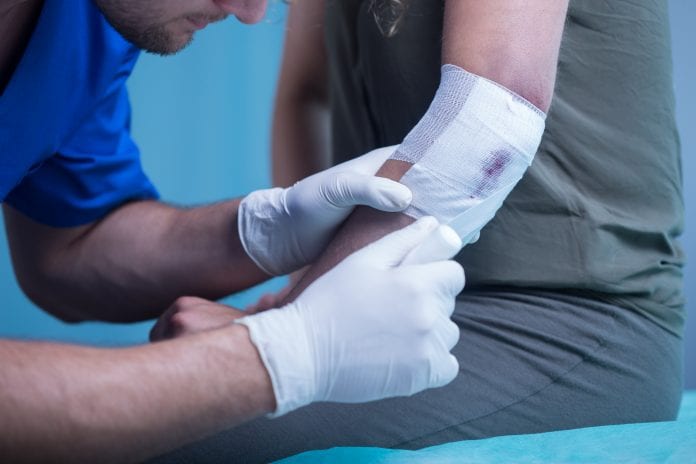Understanding Decubitus Wounds: Causes, Treatment, and Prevention

Decubitus wounds, also known as pressure ulcers or bed sores, are a significant health concern, particularly for individuals who are bedridden or have limited mobility. These wounds can lead to severe complications if not properly managed. In this article, we will explore the causes of decubitus wounds, discuss effective treatment options, and outline preventive measures to help avoid these painful and potentially dangerous sores decubitus wounds, diaper pants for adults.
What Are Decubitus Wounds?
Decubitus wounds, commonly referred to as pressure ulcers or bed sores, are injuries to the skin and underlying tissue resulting from prolonged pressure on the skin. They typically develop on bony areas of the body, such as the heels, hips, tailbone, and elbows, where the skin is thin and blood flow is easily restricted.
Causes of Decubitus Wounds
The primary cause of decubitus wounds is sustained pressure on a particular area of the body, which limits blood flow to the tissues. Without adequate blood circulation, the affected skin and tissue begin to break down, leading to sores. Several factors contribute to the development of these wounds:
- Immobility: Individuals who are bedridden, use a wheelchair, or have limited ability to change positions are at a higher risk of developing pressure ulcers due to constant pressure on certain parts of the body.
- Friction and Shear: Friction occurs when the skin rubs against a surface, such as bedding or clothing, while shear happens when the skin moves in one direction and the underlying bone moves in another. Both of these forces can damage the skin and increase the risk of pressure ulcers.
- Moisture: Excess moisture from sweat, urine, or feces can weaken the skin, making it more susceptible to breakdown. This is particularly common in individuals who experience incontinence.
- Poor Nutrition and Hydration: Malnutrition and dehydration can impair skin health and slow the healing process, increasing the likelihood of developing decubitus wounds.
- Medical Conditions: Conditions that affect blood flow, such as diabetes or vascular disease, can increase the risk of pressure ulcers. Additionally, neurological conditions that reduce sensation can make individuals less aware of discomfort, delaying necessary position changes.
Treatment of Decubitus Wounds
The treatment of decubitus wounds depends on the severity of the ulcer, which is classified into four stages:
- Stage 1: The skin is red and may be warm to the touch. The affected area may be painful but there is no open wound.
- Stage 2: The skin breaks open, forming a shallow ulcer. The area around the sore may be discolored, swollen, and painful.
- Stage 3: The ulcer deepens, exposing fat and possibly forming a crater. The risk of infection increases significantly.
- Stage 4: The most severe stage, where the ulcer exposes muscle, bone, and tendons. This stage is highly susceptible to infection and can lead to severe complications.
Treatment Options
- Relieving Pressure: The first step in treating decubitus wounds is to relieve pressure on the affected area. This may involve repositioning the patient frequently, using specialized mattresses or cushions, and ensuring the patient is properly supported.
- Cleaning and Dressing the Wound: The wound should be cleaned regularly with saline or an appropriate wound wash solution to remove dead tissue and reduce the risk of infection. Dressings that keep the wound moist while protecting it from bacteria are essential.
- Debridement: In cases where dead tissue is present, debridement (the removal of dead tissue) may be necessary. This can be done surgically, mechanically, or with specialized dressings.
- Infection Control: If the wound becomes infected, antibiotics may be prescribed. Infected wounds require close monitoring and possibly more aggressive treatment.
- Nutrition and Hydration: Ensuring the patient receives adequate nutrition and hydration is crucial for wound healing. A diet rich in protein, vitamins, and minerals supports skin health and tissue repair.
Prevention of Decubitus Wounds
Preventing decubitus wounds is far easier and less painful than treating them. Here are some key preventive measures:
- Regular Repositioning: Patients who are immobile should be repositioned every two hours to alleviate pressure on vulnerable areas. Caregivers should use proper techniques to avoid friction and shear.
- Use of Pressure-Relieving Devices: Special mattresses, cushions, and padding can help distribute pressure more evenly and reduce the risk of pressure ulcers.
- Skin Care: Keep the skin clean and dry, particularly in areas prone to moisture buildup. Use gentle cleansers and moisturizing creams to maintain skin integrity.
- Proper Nutrition: A balanced diet rich in protein, vitamins (particularly C and E), and minerals supports skin health and aids in the prevention and healing of pressure ulcers.
- Patient Education: Educating patients and caregivers about the risks of pressure ulcers and the importance of regular movement and skin care can significantly reduce the incidence of these wounds.
Decubitus wounds, or pressure ulcers, are a serious condition that requires prompt and effective treatment to prevent complications. Understanding the causes, recognizing the symptoms, and implementing preventive measures can greatly reduce the risk of these painful wounds. For those already dealing with pressure ulcers, following a comprehensive treatment plan and seeking medical advice is crucial for healing and preventing further complications. With the right care and attention, the impact of decubitus wounds can be minimized, improving the quality of life for those at risk.
If you need other products like diaper pants for adults.



